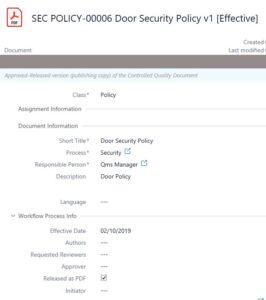In one of my previous post, I talked about the importance of Metadata, it is the skeleton of efficient document management system and particularly in M-Files!
As I like to say, M-Files is like an empty shell that can be very easily customized to obtain the ideal solution for our business/customers.
Unlike traditional folder-based storage, M-Files leverages metadata to classify, search, and retrieve documents with ease.
Properly structuring metadata ensures better organization, improved searchability, and enhanced workflow automation.
In this blog post, we will explore best practices for structuring metadata in M-Files to maximize its potential.
The importance of Metadata in M-Files
Metadata in M-Files is used to describe documents, making them easier to find and categorize.
Instead of placing files in rigid folder structures, metadata allows documents to be dynamically organized based on properties such as document type, project, client, or status…
Metadata are then used to create views, which are simply predefined searches based on them.
Additionally M-files is able to make automatic relations between different objects.
For example in a project “XXX” related to a customer “YYY”, all associated documents to this project are automatically related (and findable) to the customer.
Or Choosing a “Document Type” can dictate required approval workflows.
Another advantage can be, only the members working on the project can access the customers information and contacts…
Define Clear and Consistent Metadata Fields
When setting up metadata in M-Files, define clear fields that align with your business processes. Some essential metadata fields include:
- Document Type (e.g., Invoice, Contract, Report)
- Department (e.g., HR, Finance, Legal)
- Project or Client Name
- Status (e.g., Draft, Approved, Archived)
Ensure consistency by using standardized field names and avoiding duplicate or unnecessary fields.
When values are known like for Departments or Status,… better to use the Value lists to ensure the accuracy of the data (no typo-mistake, no end user creativity).
To make sure to respect the company naming convention, use the automatic values on properties, it can be:
- Automatic numbering
- Customized Numbering
- Concatenation of properties
- Calculated value (script)
Utilize Metadata Card Configuration
M-Files provides customizable metadata cards, allowing users to input relevant data efficiently.
Often there are properties not relevant for the end user, we can use the Metadata card configuration to hide them.
To improve readability, we can also create “section” to logically group the properties.
And Finally, Metadata card Configuration can be used to set default value and provide tips (Property description and/or Tooltip).

Leverage Automatic Metadata Population
Reduce manual entry and improve accuracy by setting up automatic metadata population.
M-Files, with the help of its intelligence service (previous post here), can suggest metadata from file properties, templates, or integrated systems, minimizing human error and saving time.
Review and Maintain Metadata Structure Regularly
M-Files is a living system and needs and must evolve with the business needs.
It is important to periodically review metadata structures to ensure they remain relevant.
Refine metadata rules, and continuously train employees on best practices to keep your M-Files environment optimized.

Final Thoughts
A well-structured metadata system in M-Files enhances efficiency, improves document retrieval, and supports seamless automation. By implementing these best practices, organizations can create a smarter document management strategy that adapts to their needs.
Are you making the most of metadata in M-Files? Good news it’s never to late with M-Files, so start optimizing your structure today!
If you feel a bit lost, we can help you!
![Thumbnail [60x60]](https://www.dbi-services.com/blog/wp-content/uploads/2022/08/GME_web-min-scaled.jpg)

![Thumbnail [90x90]](https://www.dbi-services.com/blog/wp-content/uploads/2022/08/ATR_web-min-scaled.jpg)
![Thumbnail [90x90]](https://www.dbi-services.com/blog/wp-content/uploads/2022/08/MOP_web-min-scaled.jpg)